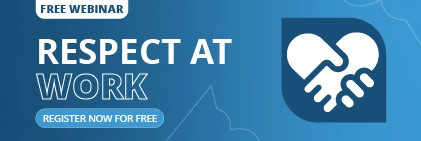The presence of modern slavery in various industries reveals the flaws in our social structure and norms. Every person deserves to be treated respectfully and fairly. But social evils such as modern slavery reduce some humans to merely being used as a source of labour. These practices hinder social and economic progress and take our civilisation centuries back, where the rich keep becoming richer, and the poor keep getting poorer.
Prevention of modern slavery can begin with businesses that understand their role and responsibility to encourage fair practices in society. Numerous laws and regulations have been designed and developed to help businesses implement the required changes. Organisations across all industries are responsible by law to identify and eradicate slavery in their workplace or supply chain.
Whether you are a business owner or an employee, you must understand the types of modern slavery to be able to identify it in your workplace and raise the issue with the appropriate persons. Let’s look at some of the most common types of modern slavery.
What Are the Various Types of Modern Slavery?
1. Child labour
Any work that deprives a child (below the age of 18) of their childhood, potential, and dignity is termed child labour. It hinders their schooling and long-term development and is generally dangerous both mentally and physically. Child labour also puts children at risk of injury, disease, or death. The worst forms of child labour include slavery, hazardous work, trafficking, and sexual exploitation.
Children who are prone to such labour often come from families trapped in poverty and are vulnerable to abuse.
Example: Children working in the mining industry, forced to produce or traffic drugs, etc.
2. Deceptive recruiting for labour or services
There are cases when a person signing up for a new job might not know the correct contractual agreements. People are recruited on the pretence of some lucrative opportunity that aligns with their perspective. But the arrangement later turns out to be quite different from what was agreed upon. Some people might be trapped to stay in employment and provide labour or services because of financial penalties.
Example: A person manipulated or tricked into working for less money than was offered at the time of recruitment.
3. Debt bondage
Debt bondage is a situation where a person is made to provide labour or services based on a debt they have agreed to. Their service or labour is taken as security or repayment of the debt. The lenders then usually keep the value of the victim’s services so low that they are unable to pay off the debt. The length or nature of their services is not defined either.
Example: A member of a family taking a loan of an amount that is deemed so high that their entire family is bound into working for the lender.
4. Forced marriage
Forced marriages are unions where one person manipulates or uses coercion to make the victim agree to the marriage. It also includes situations where a person forces marriage on someone who is mentally incapable of understanding the nature or effect of marriage.
Example: An underage person forced into marriage to a relatively old person.
5. Human trafficking
Human trafficking is the situation where people are recruited, harboured, or moved by coercion, threats, deception, abduction, or fraud for the sole aim of exploitation. The victims are often forced into slavery at the end of the trafficking journey.
Example: People are forcefully migrated from one country to another for cheap labour.
6. Forced labour
Forced labour is where a person is forced to provide labour or services at previously known/unknown places and for an indefinite period of time. The victims stay in such an arrangement because they believe they are not free to leave or they will be subjected to harsh treatment from their oppressors.
Example: Illegally hiring people from disadvantaged backgrounds and forcing them to work for free.
7. Servitude
These are cases where a person is deprived of liberty in their personal life outside of work. The victims feel incapable of moving out of this arrangement of service because of the fear of threats, deception, or coercion.
Example: A person needs to ask the authority when and whether they are allowed to eat, sleep or perform any such activity.
8. Slavery
Slavery is a situation when a person deems themselves superior and holds the power of ownership over the victim. The superior person often also treats the victim as an object of purchase and use their labour in an unrestricted way.
Example: Employing a person for labour and services and treating them as a commodity.
How do you safeguard your workforce?
To safeguard your workforce against modern slavery, the best method is to spread as much awareness as possible. Your employees must know what modern slavery is and how it is practised. This is the first step towards identifying it in the real world, and the way you deliver this information is through compliance training.
The next step is to guide them on how to report an incident of modern slavery when required. Developing and implementing a robust governance, risk, and compliance (GRC) plan can include and address all these concerns.
What does Sentrient offer?
Sentrient takes the pain out of workplace compliance obligations and offers workplace compliance management solutions that help businesses across Australia. Our online modern slavery awareness training course will help your employees learn all the details about modern slavery and what actions to take when faced with it. Our system and online courses are simple to implement and navigate and do not require any prior knowledge.
Conclusion:
All types of modern slavery result from the malicious intentions of exploiting other people for personal gains. Disregarding their freedom or fundamental rights, people from weak social or financial status are forced into slavery by powerful and influential people. This mistreatment of people is present in every industry, and therefore, laws require business owners to educate their employees about such situations.
Sentrient’s workplace compliance courses help your employees learn the code of conduct, equal employment opportunity, modern slavery, and other such workplace compliance standards. You might want to call us today for more information and view a free demo!





